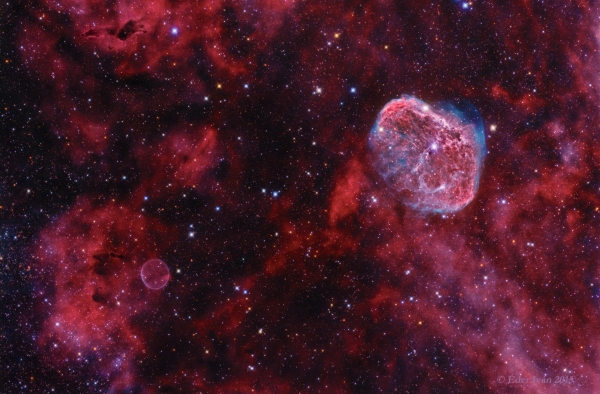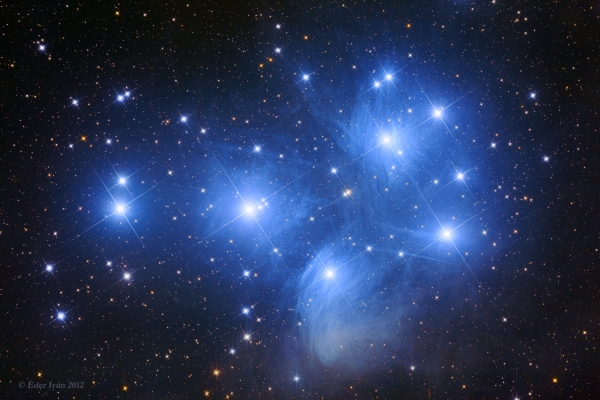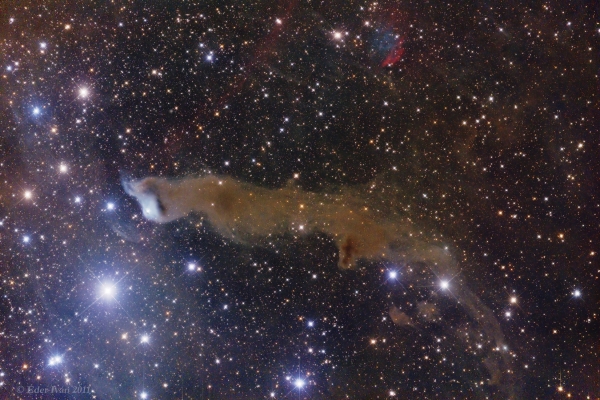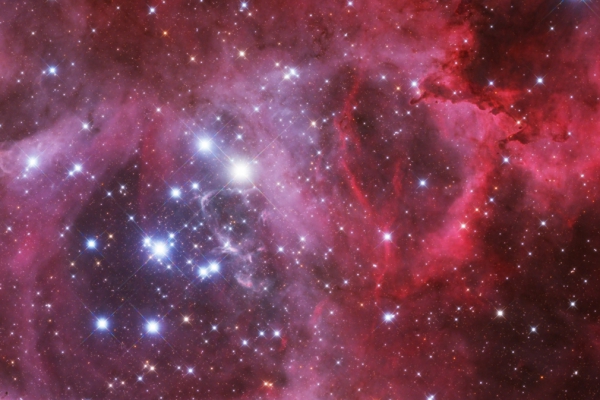The Baby Eagle Nebula (LBN 777)
in Taurus
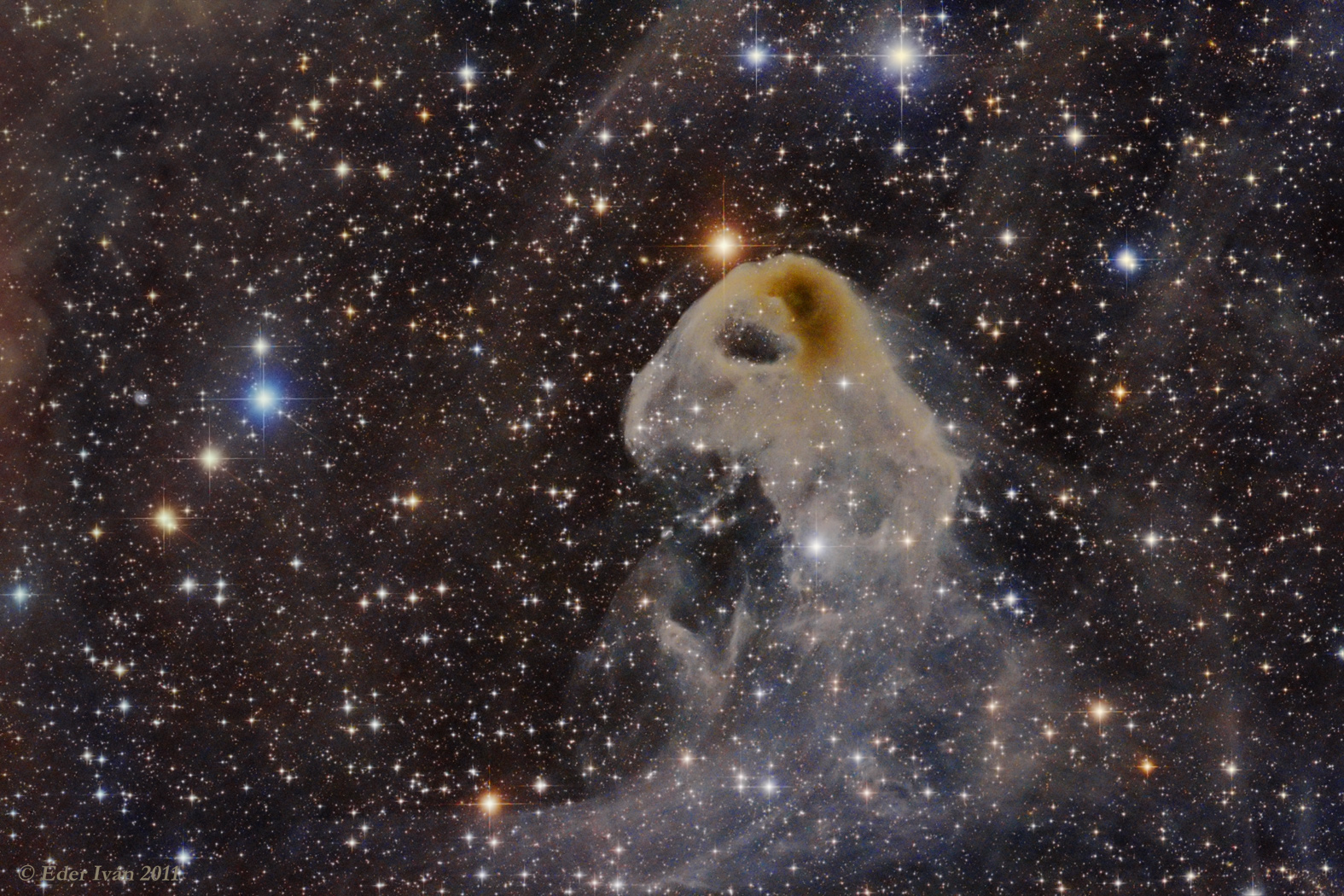
The LBN 777 is rarely imaged, also known as Vulture Head Nebula. This nebula is part of the Taurus Molacular Cloud. These giant molecular clouds consist of cosmic dust and molecular gas, with an average density of 100-1000 particles per cubic centimetre. These clouds are dark, not very dense and cold as well. The clouds can loose their gravitational balance quite easy due to some gravitational impact. That time their material can condense forming into small dense parts, called bok globules. These globules keep getting more and more dense with increasing temperature, therefore new stars - and their planets - born from their material.
Taurus
Molecular Cloud as a formation of a kind is one of the nearest to us,
located about 400 light years away. Such a dense part of it LBN 777 -
its external part lit by the surrounded stars (or even by the Milky Way
itself)- can be observed as a very faint reflection nebula. Its more
dense inner part is quite dark, cataloged as a dark nebula by E. E.
Barnard (#207). This is the densest part of this nebula, (no starlight
can permeate of it) where presumably new stars are born.
Very close, some 4.5 degrees away locates the famous Pleiades, which bright reflection cloud is part of the Taurus Molecular Cloud as well.
The Eaglet Nebula is very faint, so it can be observed only by taking long exposure photographs.
Image details
- Instrument:
- 300/1200 Newton, 3" Wynne-corrector (1130mm effective focal length)
- Camera:
- Home-modified Canon EOS 5DmkII
- Mount:
- Fornax 51 + Boxdörfer DynoStar
- Guiding:
- 9x50mm SkyWatcher finder scope (50/180mm), Lacerta-MGen autoguider
- Exposure time, filters:
- 120x5 min (10 hours total) @ ISO 1600
- Location, date:
- Ágasvár, (Mount Matra), Hungary; 2011.01.28., 29., 30..
- Observing conditions:
- Transparency: 8/10, Seeing: 8/10, Temperature: -9°C
- Processing:
- ImagesPlus, Registar, Pixinsight LE, Photoshop


